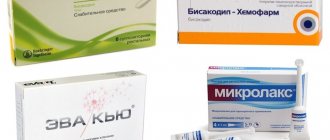Folic acid - vitamin B9
Folic acid, B9 or acidum folicum is an organic compound of B vitamins. The name comes from the Latin word folium, which means leaf, found in food in the form of folates (folic acid salts). Therefore, the term vitamin B9 is often identified with a whole group of compounds (it has been established that theoretically there can be about 150 different forms of folic acid; in nature there are about 20).
Folic acid is found in the tissues of many plants and animals. It was first isolated in the 1940s from spinach leaves. Physically, folic acid is a water-soluble, light yellow substance.
The level of folic acid in the body drops when we live under stress, abuse coffee and alcohol, smoke, take acetylsalicylic acid and even some contraceptives. The body's reserves of folic acid are depleted due to poor nutrition, inadequate diets and sudden weight loss.
Folic acid is an exogenous substance that enters the body through food because the body cannot produce it on its own (it can be produced by bacteria in the human digestive tract).
Choice of drug
It has been established that regular use of the substance by the expectant mother reduces the risks of developmental disorders of the infant and spontaneous miscarriage by 80%. This means that every woman who is planning to conceive a child needs to start drinking folic acid in advance. This is a simple, effective, safe and medically proven way to protect yourself and your future baby from many health and development problems.
The choice of drug should be determined by the doctor's recommendation. The pharmacy chain has plenty of products in tablets and other forms containing folic acid. Doctors recommend choosing a drug in tablets that belongs to the group of drugs. In this form, the content of the active substance in the specified dosage is guaranteed.
Along with tablets, you can find other forms of folic acid in pharmacies, such as chewable lozenges or gummy candies. As a rule, such forms are dietary supplements. This means that the content of active ingredients in them is not standardized and is determined only by the reputation and responsibility of the manufacturer. To obtain folic acid in the required dosage, choose the drug recommended by your doctor.
The importance of folic acid for the female body
Why do women need folic acid? The required level of folic acid in a woman’s body determines its proper functioning. The active form of B9 plays a key role in the metabolism of many amino acids, in addition to supporting the production of serotonin, which is one of the most important factors for healthy sleep and relaxation. What else is folic acid good for the female body? Folic acid is responsible for normalizing the functioning of the nervous system, improving attention and memory, and increasing mental activity. In addition, it participates in the production of digestive enzymes and supports the proper functioning of the liver, intestines and stomach.
It has some preventive effect on the development of uterine and stomach cancer in women.
Planning and pregnancy
Vitamin B9 is an extremely important substance early in a child's life. It is involved in the formation of the neural tube. It is on the basis of this structure that the baby’s brain and spinal cord develop. Vitamin B9 supplementation for women of reproductive age significantly reduces serious fetal developmental disorders such as anencephaly (complete or partial absence of the cerebral hemispheres) and spina bifida (a malformation of the spine).
Vitamin B9 is also an important ingredient for the proper development of the fetus in late pregnancy. During pregnancy, folic acid ensures good condition of blood vessels and red blood cells, stimulates cell reproduction during the period of intensive growth, and prevents the development of anemia in the child. To maintain proper levels of B9 in the blood, a nursing woman, like a pregnant woman, should take 400 mcg of folic acid tablets as a dietary supplement.
For women after 40 and 50 years
Folic acid for women over 40 plays an important role in the proper functioning of the nervous system. This is due to its participation in the synthesis of adrenaline, norepinephrine and dopamine, which are key neurotransmitters for the body. Numerous studies have shown a correlation between folic acid deficiency and the development of nervous system disorders (depression, epilepsy, psychosis, dementia, as well as diseases of the spinal cord and peripheral nerves). In addition, vitamin B9 helps maintain proper homocysteine concentrations in the blood. Insufficient folic acid in women over 50 years of age leads to increased levels of homocysteine, which may be involved in the development of atherosclerosis and neuronal degeneration. Consequently, cerebral ischemia, microinfarctions, vascular dementia and Alzheimer's disease may occur.
The role of vitamin B9
The main role of folic acid is to participate in the creation of new body cells and support them in a healthy state.
Other properties:
- participates in DNA replication (creation of daughter molecules);
- affects RNA synthesis;
- promotes protein absorption;
- helps the absorption of other vitamins;
- has an antioxidant effect;
- prevents the development of cancerous tumors;
- participates in the production of nucleic acids, the connection of protein structures, the formation of blood cells (erythrocytes);
- maintains immune status at a high level;
- prevents the development of atherosclerosis.
Folic acid is believed to help you get pregnant faster. In the early gestational stages, it is especially necessary for the mother and fetus. It will help eliminate pathological changes in the woman and fetus. Therefore, gynecologists recommend starting to drink folic acid when planning pregnancy , when a larger dosage is required than usual.
Consequences and prevention of folic acid deficiency
A deficiency of folic acid in the body can contribute to anemia, degenerative disorders, cardiovascular disease, osteoporosis and even cancer. In women in early pregnancy, B9 deficiency increases the risk of neural tube defects in the fetus.
Side effects of folic acid deficiency in women:
- Pale skin
- Fast fatiguability
- Excessive hair loss
- Dry skin
- Headache
- Dizziness
- Problems with concentration
- Insomnia
- Alarm states
- Mood swings
- Digestive problems
- Weight loss
The bioavailability of folic acid in our body depends on the type of medications taken and the general condition of the digestive system and intestinal microbiota. Interestingly, synthetic folic acid can be absorbed up to 100%, while its natural version is absorbed at a maximum level of no more than 80%. It is worth remembering that the proper use of folate by the body is supported by the presence of vitamins C and B12, as well as zinc. Folic acid is stored mainly in the liver, and its reserves in the body are 5-10 mg.
Folates and pregnancy
The first reports of a connection between congenital malformations and folate deficiency were published back in 1964. However, it took several decades to convince everyone that taking folic acid supplements at the preconception stage and in early pregnancy can prevent the development of most severe fetal malformations.
Consequences of folate deficiency
The most severe and well-studied problems of folate deficiency are related to defects in the formation of the fetal neural tube. These anomalies form very, very early. Already on the 20th day after conception, a neural plate is formed on the dorsal side of the embryo, the edges of which later begin to close, forming the neural tube.
Around the 23rd day, this tube should close completely, leaving only the holes at its ends open. If by the 26th day part of the neural tube does not close completely, the fetus develops a spinal defect - spina bifida: a developmental defect often combined with spinal cord defects. Every year about 300 thousand children are born in the world with such defects.
Neural tube defects (NTDs) rank first among the causes of morbidity and mortality in newborns. There are many variants of such anomalies, but the most common are spina bifida and anencephaly. With anencephaly, the fetus does not develop the cerebral hemispheres. This is a completely lethal defect: half of the fetuses with anencephaly die in utero, and the remaining children, although born alive, in 66% of cases can live for several hours, some live for about a week.
However, if children with NTDs are not born so often (approximately 1 case per 1000 births), the incidence of other folate-dependent defects (congenital heart defects, urinary system defects, limb defects, cleft palate, defects of large arteries, etc.) is much higher (1 case per 100 births). There is new evidence that folate deficiency may be a cause of autism spectrum disorder and other behavioral disorders1.
Most severe folate-dependent malformations cannot be cured—they can only be prevented. When a patient comes to an appointment with “two stripes,” she will certainly be recommended to take folic acid supplements throughout her pregnancy. This is good and right, but in most cases it is too late.
The level of folate in red blood cells rises very slowly, taking several months to accumulate protective concentrations. While the woman went to the pharmacy for a test, called the clinic and made an appointment, everything had already happened: the neural tube of the embryo had already closed - or not closed. That is why it is necessary to take care of your folate status at the stage of preparation for pregnancy - at least 2-3 months before the expected conception.
Drugs or food products?
Folic acid, or vitamin B9, enters our body with food. Cabbage (white, cauliflower and broccoli), legumes, lettuce, spinach, green onions, green peas, beans, soybeans, beets, carrots, tomatoes, wholemeal flour and baked goods made from this flour, buckwheat and oatmeal, millet, yeast - main natural sources of folate. Among animal products, liver, kidneys, cottage cheese, cheese, caviar and egg yolk should be noted.
Alas, the seemingly simplest way—eating more foods rich in folic acid—is also the most ineffective. Firstly, foods do not contain much folate. Not everyone can eat enough food to get the required daily dose. Eating 18 florets of broccoli every day is not easy, but 9 glasses of freshly squeezed orange juice can knock out half of your gastrointestinal tract.
The bioavailability of natural folates is low; most of them are destroyed during cooking. When cooking vegetables and meat, the loss of folic acid reaches 70–90%, when frying meat - 95%, when boiling eggs - 50%. Fresh leafy vegetables stored at room temperature lose up to 70% of their folate in 3 days.
Accelerated technologies for growing leafy vegetables do not allow plants to accumulate folic acid sufficiently. Modern agricultural technologies are aimed at growing quickly, storing for a long time, and rarely spoiling. This is why doctors around the world are sounding the alarm: modern food does not allow a person to provide a complete diet with a sufficient supply of vitamins and microelements.
A little less than 100 years ago, humanity learned to artificially synthesize folic acid. Such drugs are perfectly absorbed and really replenish folate deficiency. It is important to understand that folic acid is a water-soluble vitamin, so hypervitaminosis, in case of overdose, does not threaten humanity (the excess is simply excreted in the urine). At a prophylactic dose of 400–800 mcg/day. Folic acid can be taken for years. This should be taken into account by those whose desired pregnancy is delayed indefinitely.
Is overdose real?
Despite the widespread prevalence of folate deficiency in the population, another, no less important problem has emerged in our country - excessive consumption of folic acid in the form of medications in doses of 5 mg (= 5000 mcg) per day or 1 mg (= 1000 mcg) 3-3 times a day. 6 tablets per day.
I can give even more monstrous examples when, after recalculating the folate content in all medications prescribed for a particular pregnant woman, it turned out that the daily dose of folic acid reached 13,000–15,000 mcg! Fortunately, new
clinical recommendations
for preconception preparation (2016) dotted all the i's in this difficult issue (we have already
written
about this previously).
High-dose therapy with folic acid preparations is carried out according to strict indications. Although vitamins and minerals are approved for use during pregnancy, dosages do matter. The use of unreasonably high doses of folic acid moves this drug from safe category A (no risk) to category C (risk to the fetus cannot be excluded). But in preventive doses, folates will be useful to all pregnant women, without exception, and especially those planning a pregnancy.
Oksana Bogdashevskaya
Photo istockphoto.com
1 Gao Y1, Sheng C1, Xie RH. New Perspective on Impact of Folic Acid Supplementation during Pregnancy on Neurodevelopment/Autism in the Offspring Children - A Systematic Review. // PLoS One. 2021 Nov 22;11(11)
Folic acid: indications for use
Folic acid supplements are one of the vitamins recommended for mothers and pregnant women, as well as people who cannot meet their folic acid deficiency through regular diet.
B9 nutritional supplements are recommended for women planning pregnancy, pregnant and lactating mothers using hormonal contraceptives, as well as for people monitoring the proper functioning of the hematopoietic system. Folic acid in combination with other B vitamins is prescribed to patients if mild forms of anemia are diagnosed.
Contraindications for use and side effects of folic acid
Although some studies indicate that taking up to 5 mg of vitamin B9 per day does not cause toxic effects, it has been found that taking more than 1 mg of folic acid per day can cause abdominal cramps, diarrhea, rashes, sleep disturbances, irritability, confusion consciousness, nausea and other side effects.
There is also concern that taking too much folic acid over a long period of time may cause serious side effects. Some studies suggest that taking folic acid in doses ranging from 800 mcg to 1.2 mg per day may increase the risk of heart attack in people with heart problems. Other studies suggest that taking such high doses over a long period of time may accelerate the growth of existing cancers. In addition, excess folic acid during pregnancy increases the child's risk of developing asthma.
Regarding contraindications to taking folic acid, the following factors are distinguished: vitamin intolerance, acute B12 deficiency, the presence of cancer, malignant anemia.
How to take folic acid correctly
The recommended dosage of folic acid is 400 mcg per day. Doses of folic acid greater than 1000 mcg per day are not recommended.
How to take folic acid? The need for folic acid varies depending on gender, age and the presence of systemic diseases. Thus, the American Food and Drug Administration (FDA) has determined that folic acid intake in relation to the above factors should be 0.07–0.13 mg/day. For women planning a pregnancy, B9 is recommended to be administered 12 weeks before conception. At the same time, the dose of folic acid for already pregnant and lactating women is 0.4 mg/day. However, before taking B9, you should definitely consult your doctor.
Destination Features
You should take folic acid following these rules:
- do not miss an appointment;
- with prolonged use, monitor the level of vitamin B12 in the blood;
- take into account the dose in tablets and received with food to avoid overdose;
- Do not choose medications on your own and do not change the dosage;
- women need more folate than men;
- warn the doctor about the treatment of chronic diseases;
- be constantly monitored by a gynecologist;
- consult a doctor if your health worsens;
- notify the doctor immediately if ARVI or any inflammatory processes occur;
- Do not use if you are hypersensitive.
Folacin is not absorbed or partially absorbed:
- on an empty stomach;
- when smoking;
- alcoholism;
- stress;
- with lack of sleep;
- hard work in hazardous industries;
- taking antibiotics, hormones.
When planning pregnancy, alcohol, smoking, caffeinated drinks, and fast foods are excluded.
Content of folic acid (Vitamin B9) in foods
The main source of folic acid for humans is food. The intestinal microflora synthesizes only small amounts of vitamin B9, therefore, its supply from the outside is extremely important.
Which foods contain more folic acid? The main source of folic acid in the diet is dark green vegetables. It is found mainly in greens and vegetables such as spinach, parsley, broccoli, and Brussels sprouts.
Legumes are also a good source of folic acid. Among them, the richest in B9 are soybeans, white beans, peas and beans. Folic acid can also be found in some nuts, such as peanuts, walnuts and almonds. Large amounts of folic acid are found in organ meats, mainly beef and chicken liver.
It should be remembered that excess folic acid does not cause any particular harm to the body, and is relatively well tolerated even at a dose of 5 mg. However, increased intake of folic acid may mask vitamin B12 deficiency and the development of pernicious anemia. Do not forget that taking any supplements requires prior consultation with your general practitioner or family doctor.
Womenfirst
- Gorbachev, Gorbacheva: Vitamins. Macro- and microelements. Directory (Special Publishing House of Medical Books, 2011). – 432 p.
- Bitsadze V.O., Samburova N.V., Makatsaria N.A., Mishchenko A.L. Folate deficiency conditions in obstetric practice and the problem of their correction // Obstetrics, gyn. and reproduction. 2021. T. 10, No. 1. P. 38-48.
- Ars CL, Nijs IM, Marroun HE, Muetzel R, Schmidt M, Steenweg-de Graaff J, et al. Prenatal folate, homocysteine and vitamin B12 levels and child brain volumes, cognitive development and psychological functioning: the Generation R Study. Br J Nutr. 2016.
- Caffrey A, McNulty H, Irwin RE, Walsh CP, Pentieva K. Maternal folate nutrition and offspring health: evidence and current controversies. Proc Nutr Soc. 2019; 78:208–20.
RUS2178494 (v1.2)











